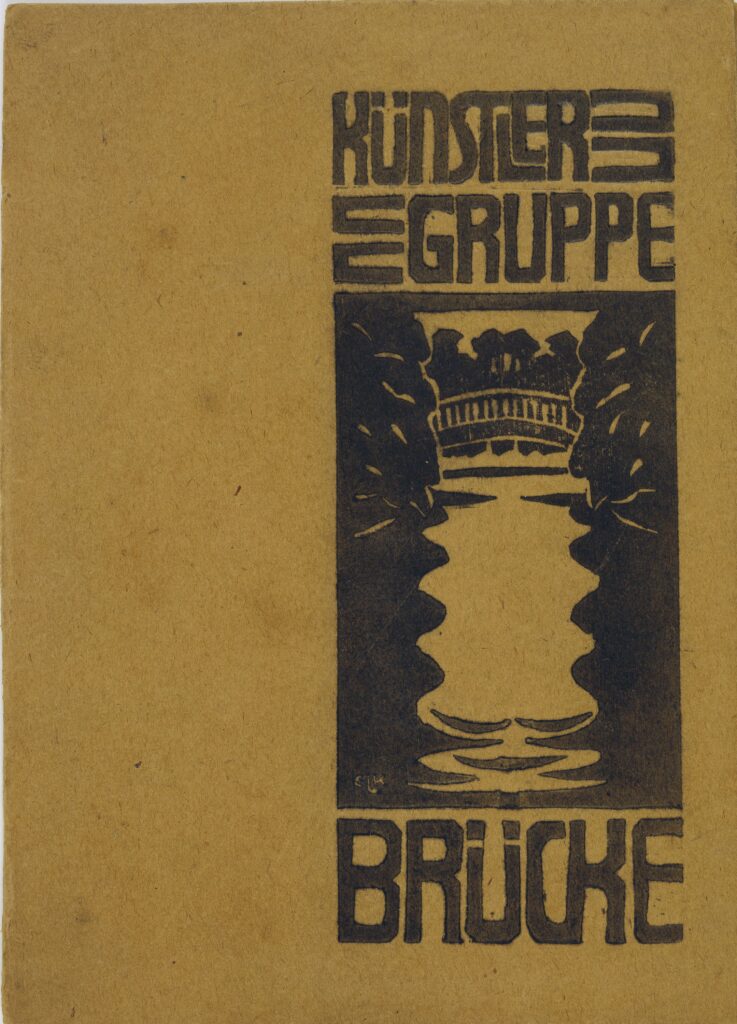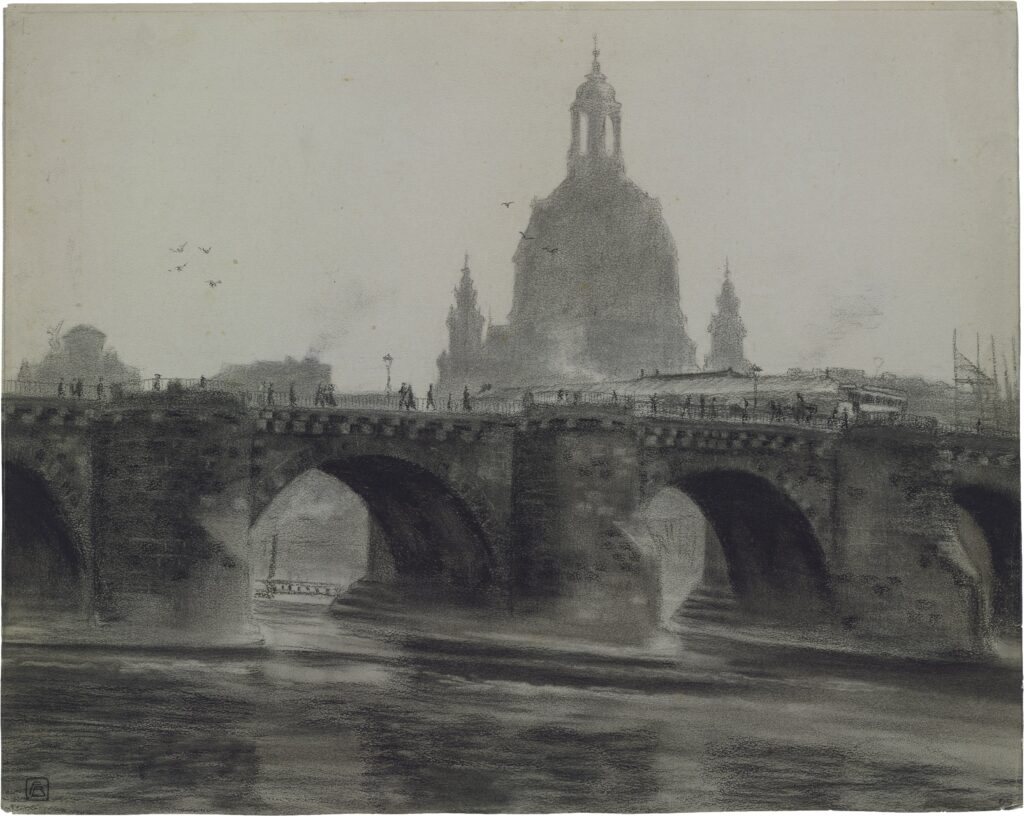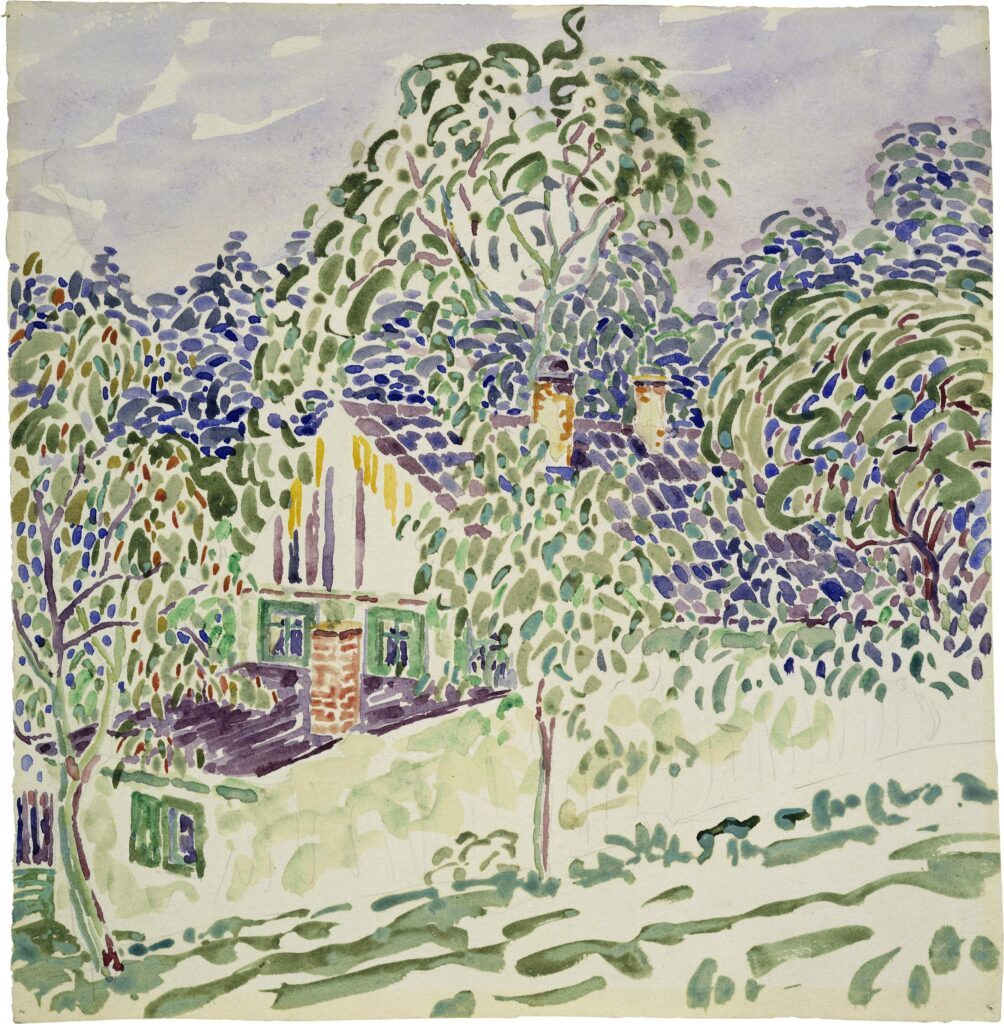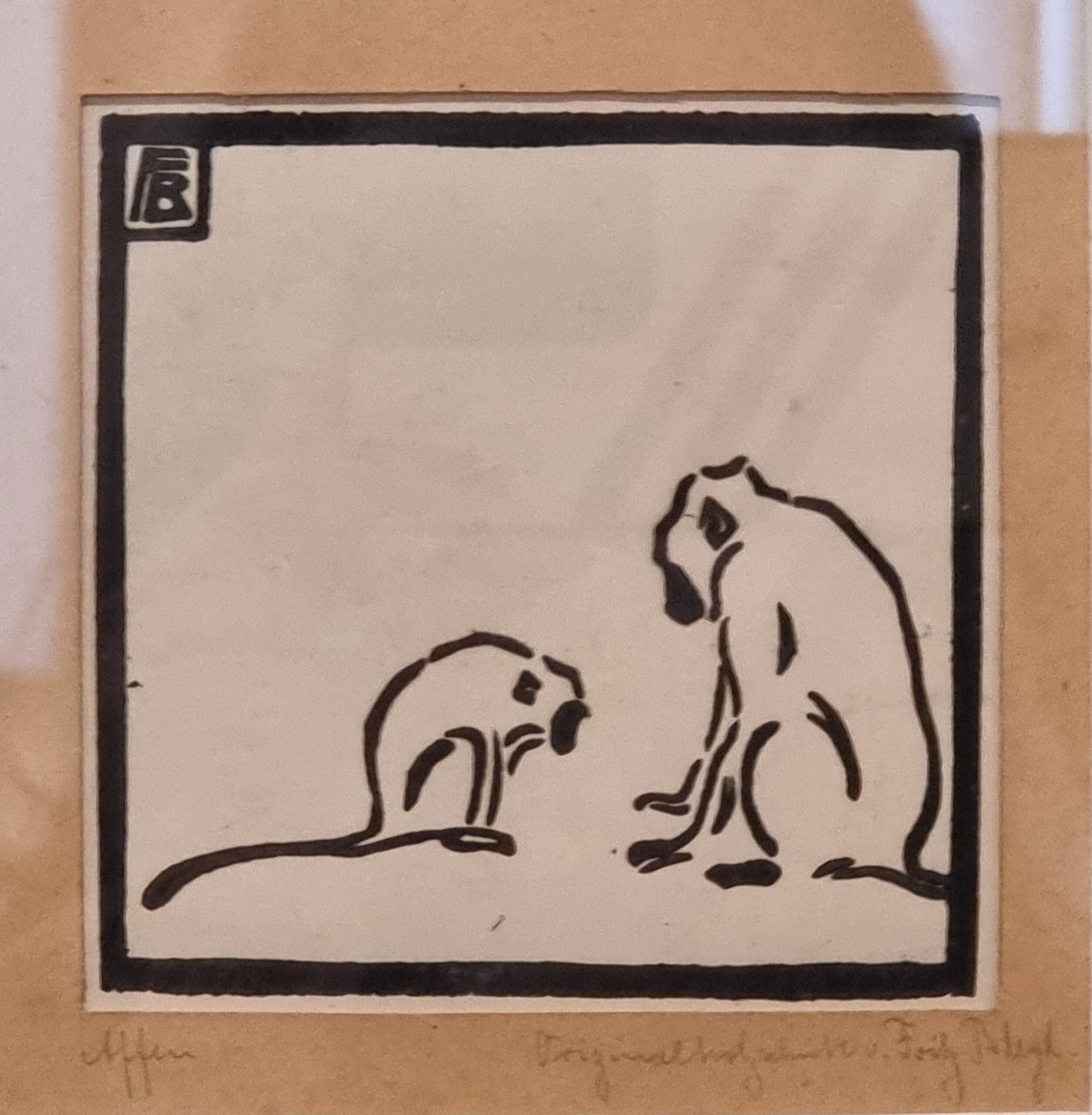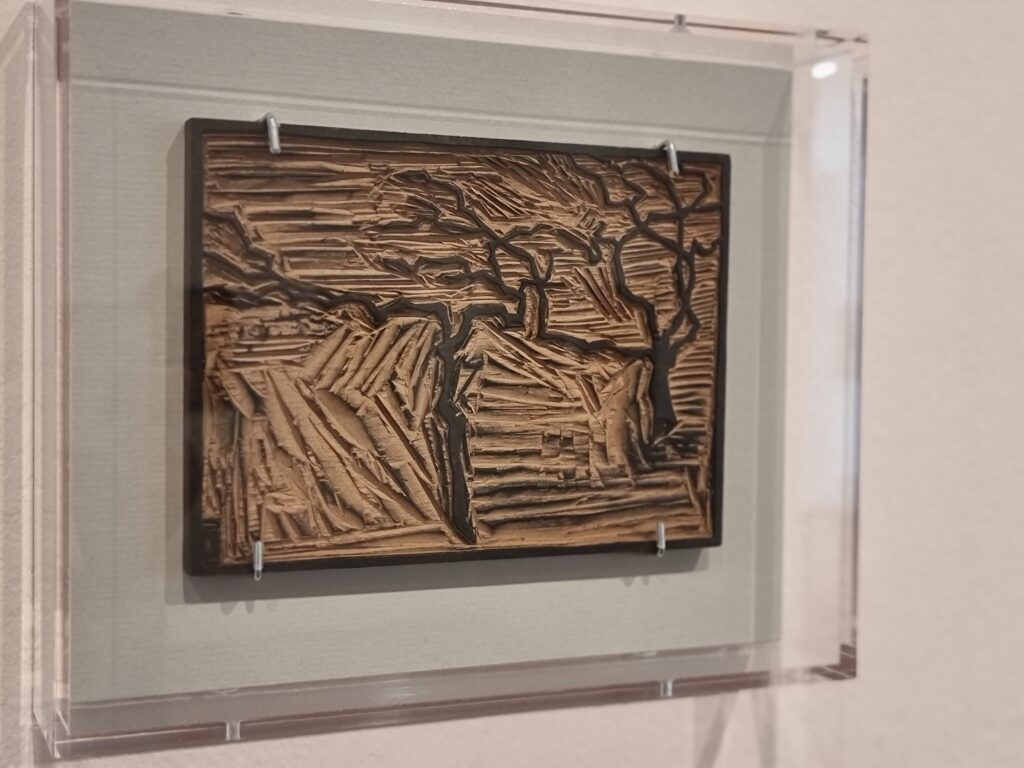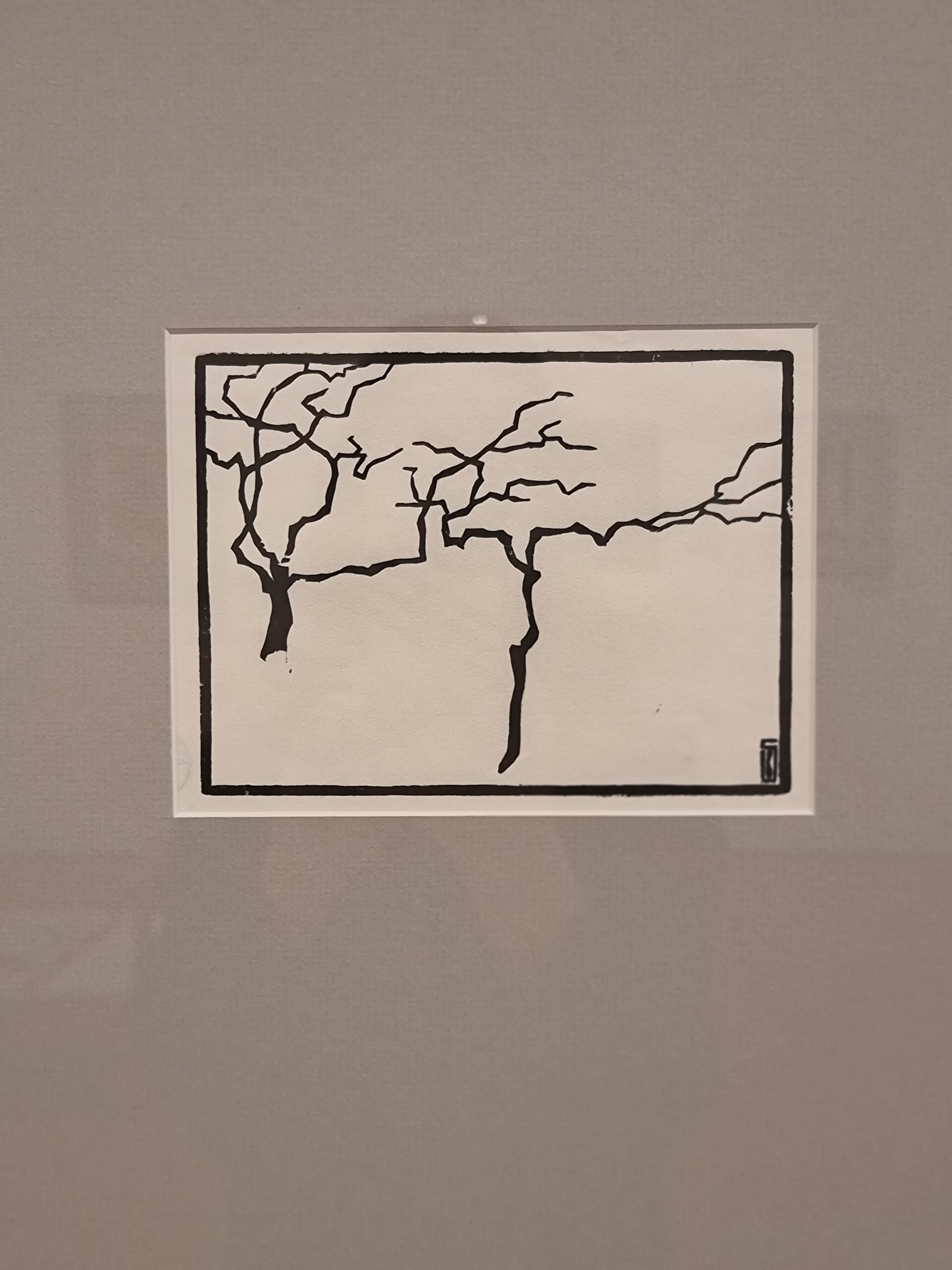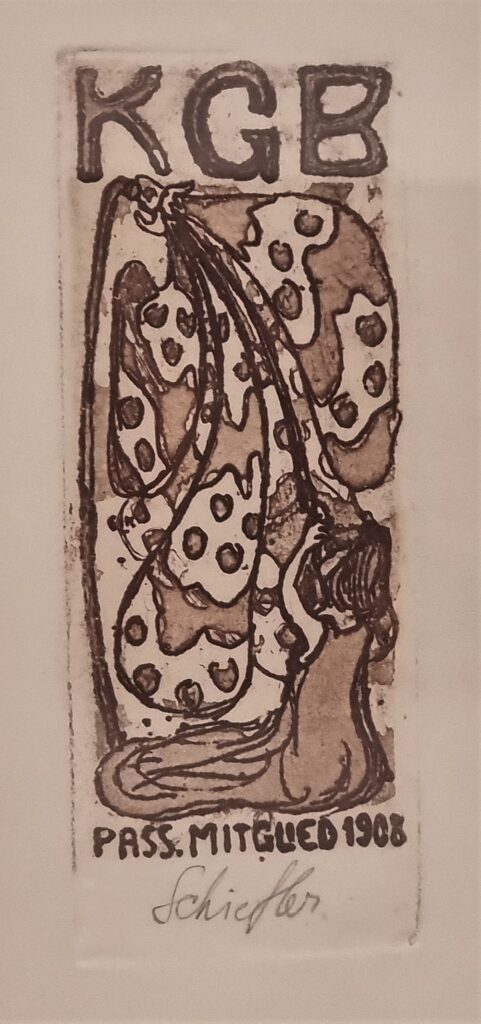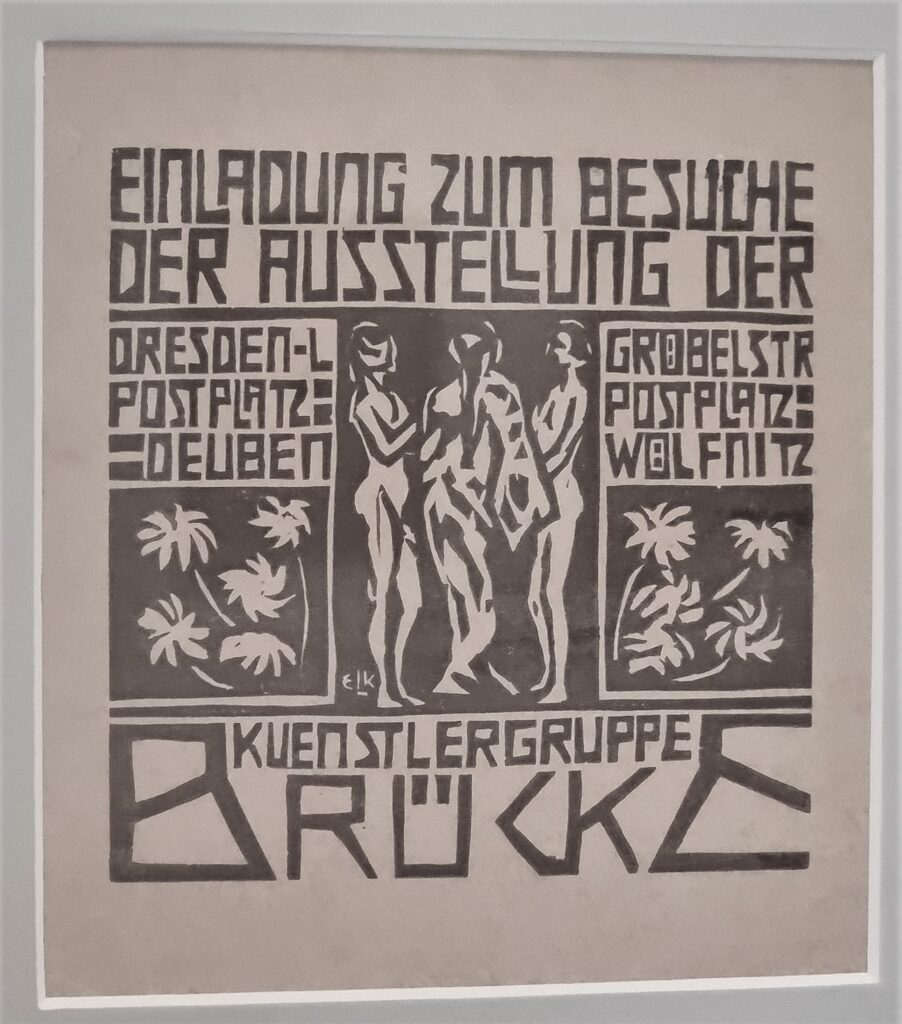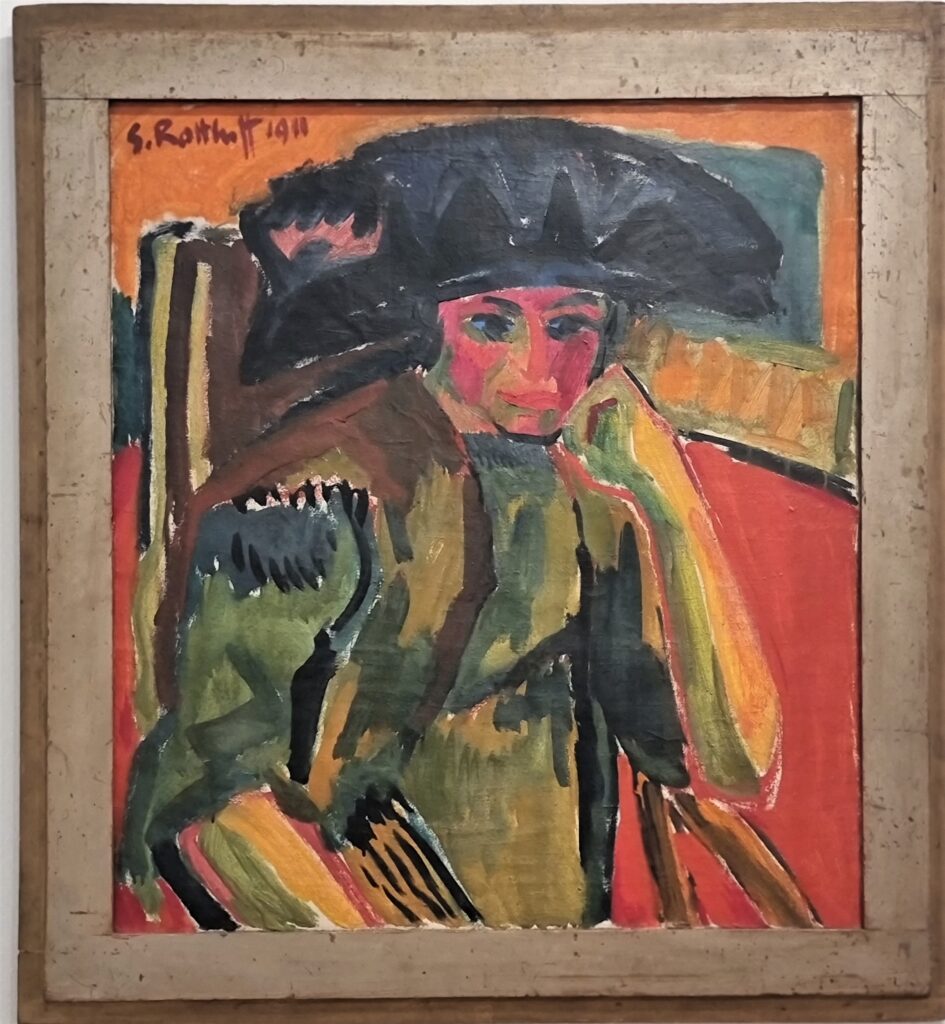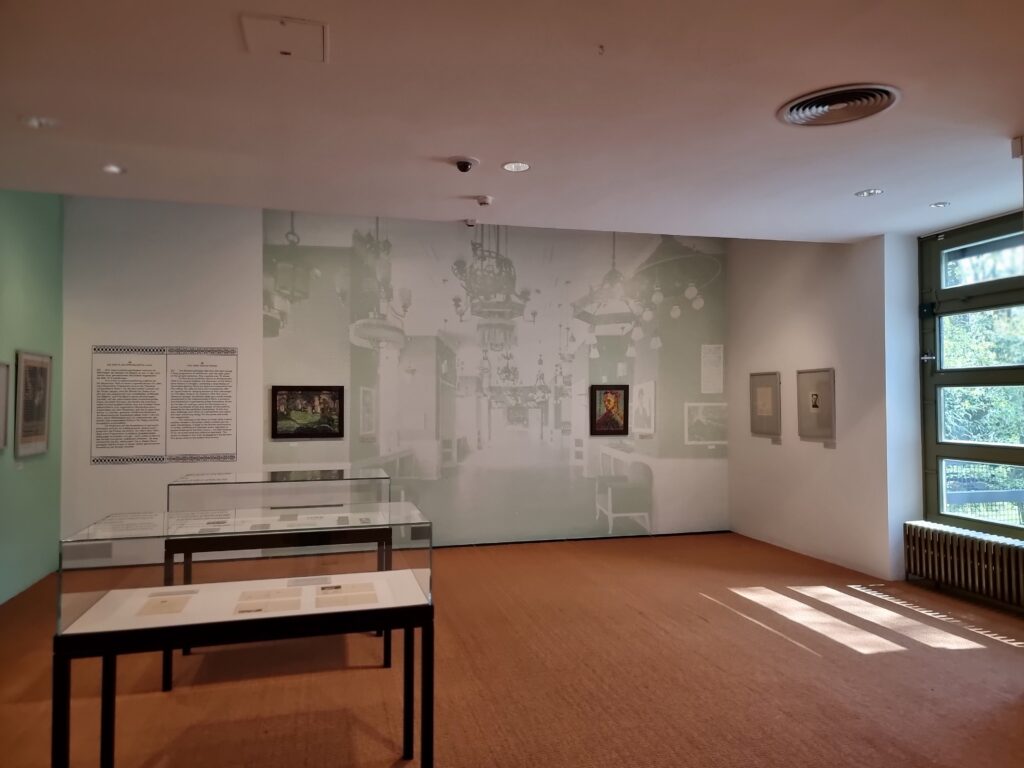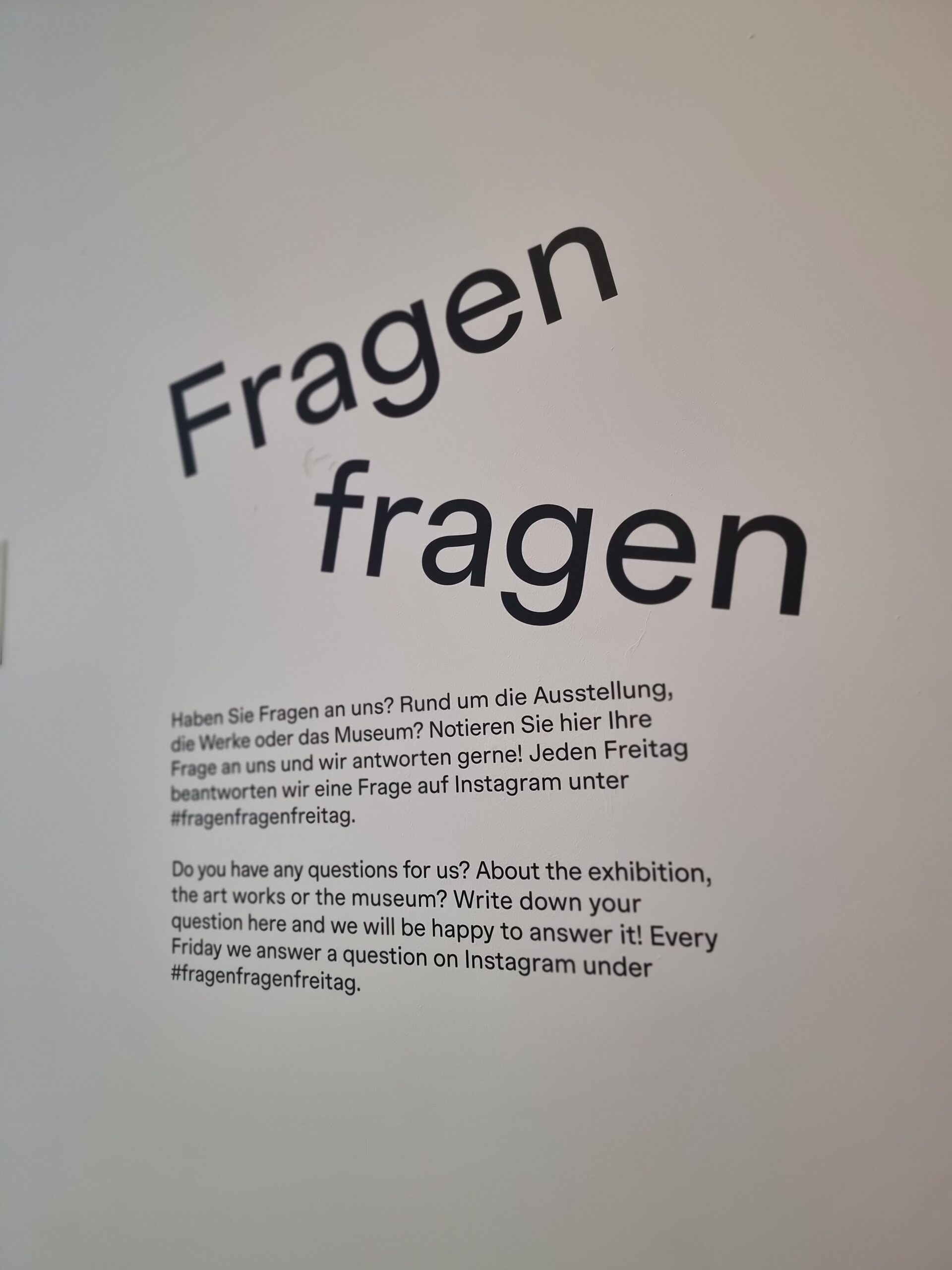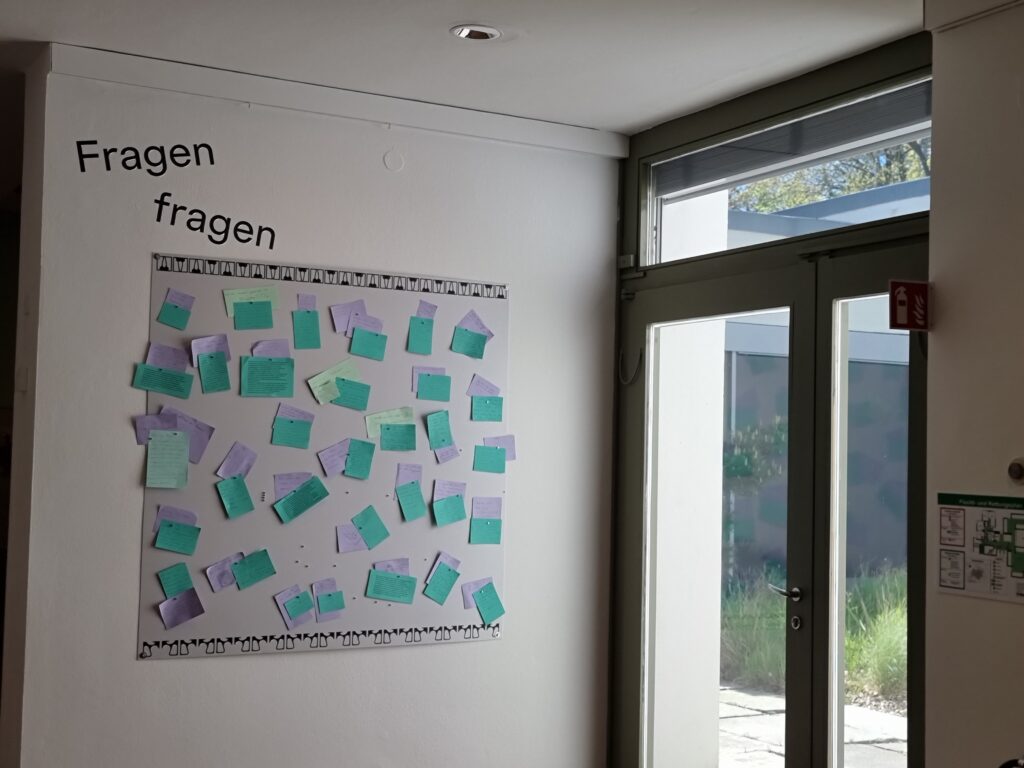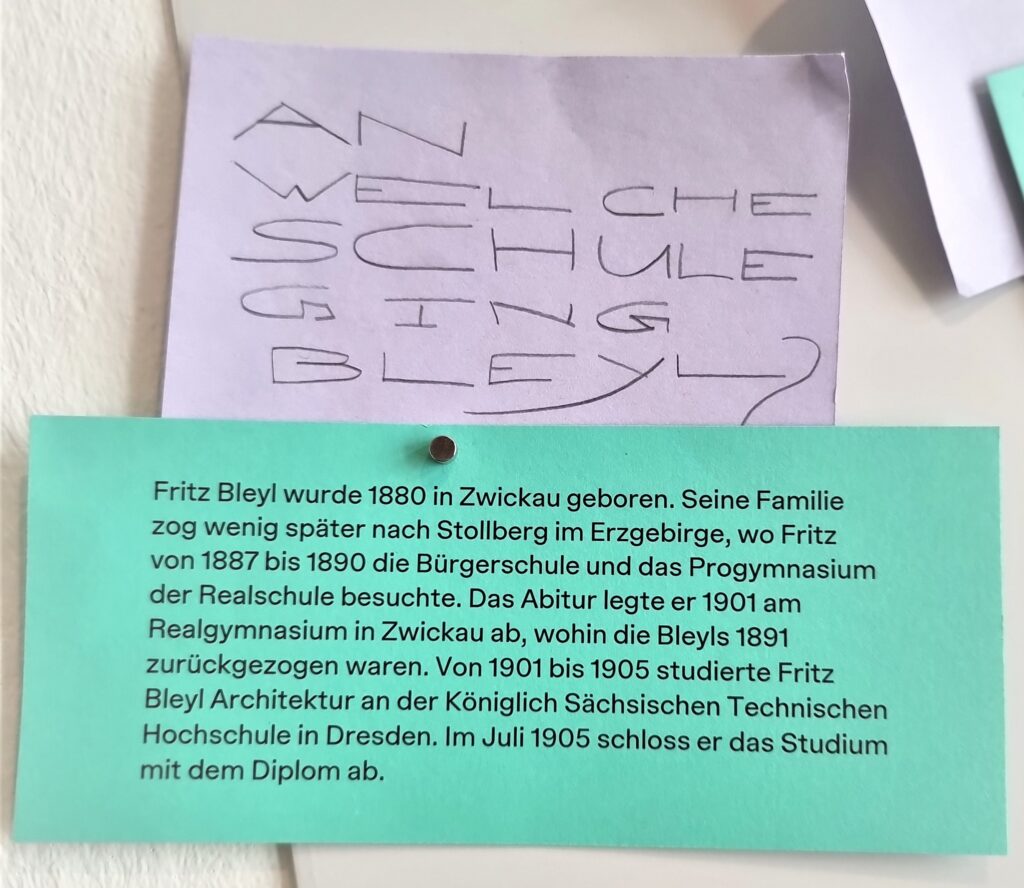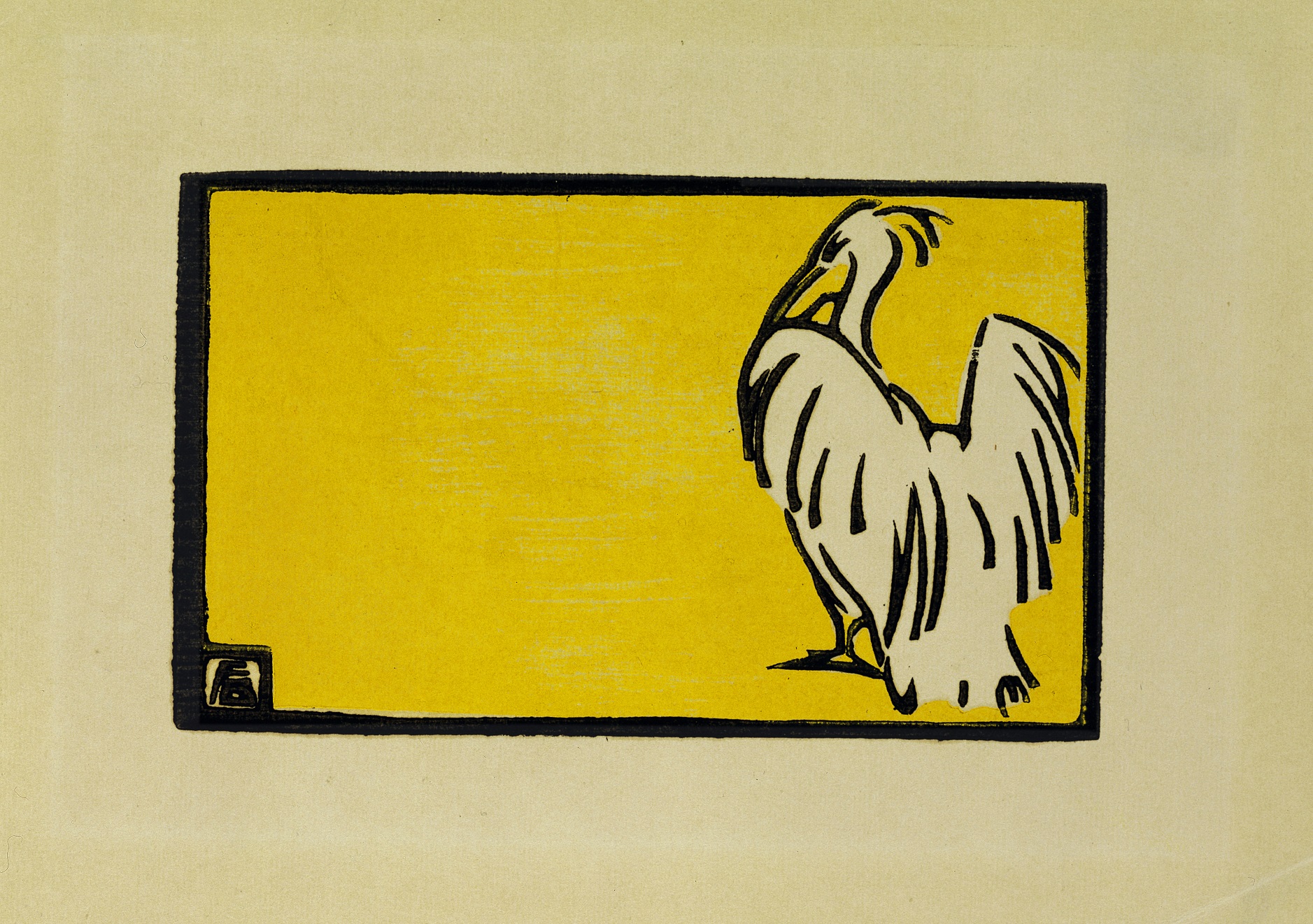
Exhibition of the artist group “Die Brücke” with focus on Fritz Bleyl
nce upon a time (in 1905) there were 4 students who found the art too narrow-minded and decided to make a change. The creative urge was the deciding factor to found the artist group "Die Brücke". It only existed until 2013, but it changed the art world forever!
At first, only Fritz Bleyl and Ernst Ludwig Kirchner were friends. As one can learn in the current exhibition of the Brücke Museum, they got to know each other in a geometry course they attended together. Both were studying architecture in Dresden. They would much rather have studied art, but this was not possible due to their middle-class backgrounds. Instead, they tried to live out their passion for painting by organizing drawing evenings. Like-minded, they initially found in Erich Heckel, who later introduced them to Karl Schmidt from Rottluff, which would become the artist name Karl Schmidt-Rottluff from 1905. …the rest is history!
In 1905 they founded the artists’ group “Die Brücke”.
The origin of the name is not completely clear, instead there are several speculations:
First, the name is said to go back to Schmidt-Rottluff, who found the word so “open-minded” that one could not really associate anything with it, neither an art style nor an attitude.
But since bridges lead from one shore to the next, it could be used to express “new shores”, new ways of thinking and art. Thats what Heckel wrote in his memoirs, later. The old Augustus Bridge in Dresden, of which Kirchner, among others, had made a woodcut and which was an artistic motif for all four, could be another explanation for the name.
…or because of the work “Thus Spoke Zarathustra” by Nietzsche and his philosophical impulses expressed in it, which was read intensively by all of them.
“What is great in man is that he is a bridge and not a goal: what is lovable in man is that he is an OVER-GOING and a DOWN-GOING.” (Friedrich Nietzsche)
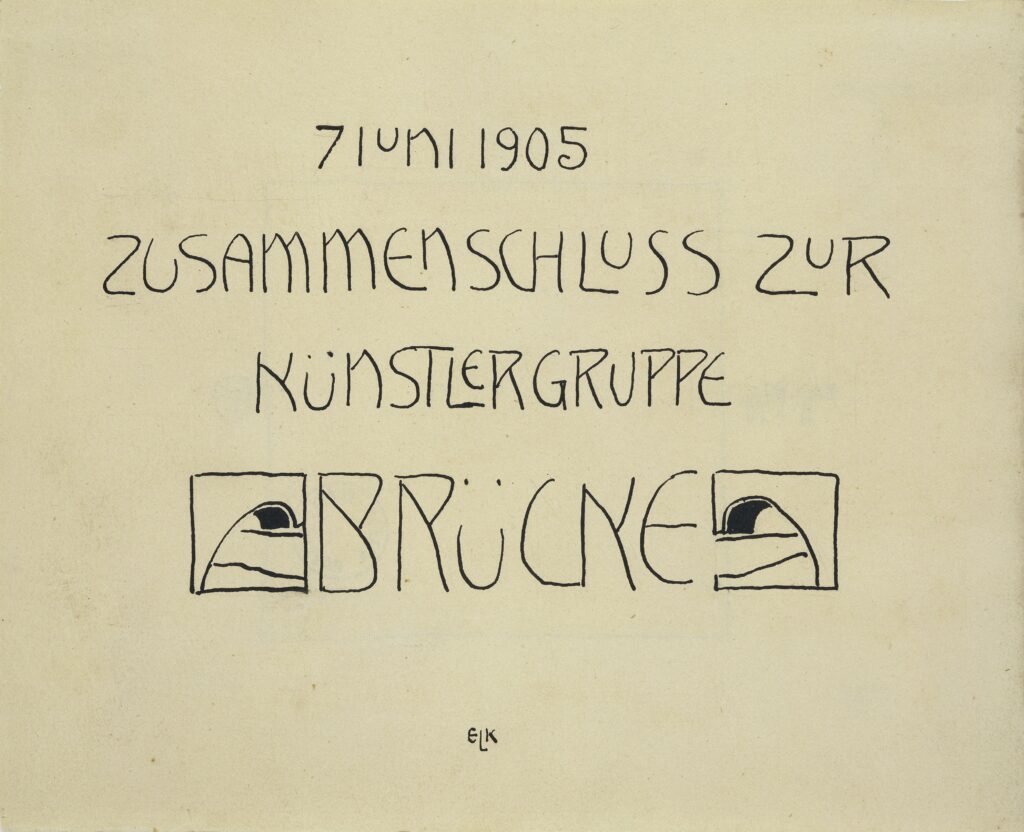
The current exhibition, which runs until June 4, is the third and last part of an exhibition “series”. This time it deals exclusively with the beginnings and especially the founding year 1905 with special focus is on Fritz Bleyl.
Bleyl, who left the group only 2 years later, was responsible for many of the initial prints created around the marketing of the artist group and for the business stationery. Unlike the other artists, he completed his architectural studies and worked full-time as a teacher at a private school to earn money. Even later, after leaving the Brücke, he was employed in various architectural offices. In 1916, he earned his doctorate under Cornelius Gurlitt*, the grandfather of the art collector who made headlines in 2012. Bleyl remained true to his initial Pointilist style longer than the other artist members, devoting himself primarily to printmaking and, unlike his peers, did not engage in oil painting at all. Due to early leaving the artists’ association and because he no longer followed the further expressionist path along with his fellow artists, his work often remained in the background.
Together Fritz Bleyl, Ernst Ludwig Kirchner, Karl Schmidt-Rottluff and Erich Heckel organized numerous exhibitions, which were in total more than 70. Right from the start, the group took a very strategic approach to marketing and financing their work and artistic existence. For example by passive members, whose membership cards are shown in the exhibition. For an annual fee of 12 Mark, these members received original prints by the artists. Furthermore, there were art folders with prints and invitations for the exhibitions. One of the passive members was the Hamburg art historian Rosa Schapire, from whom there is an oil painting by Karl Schmitt-Rottluff in the exhibition. She was an important supporter of the Brücke, compiled their catalogs of works and wrote postcards and letters with the painters.
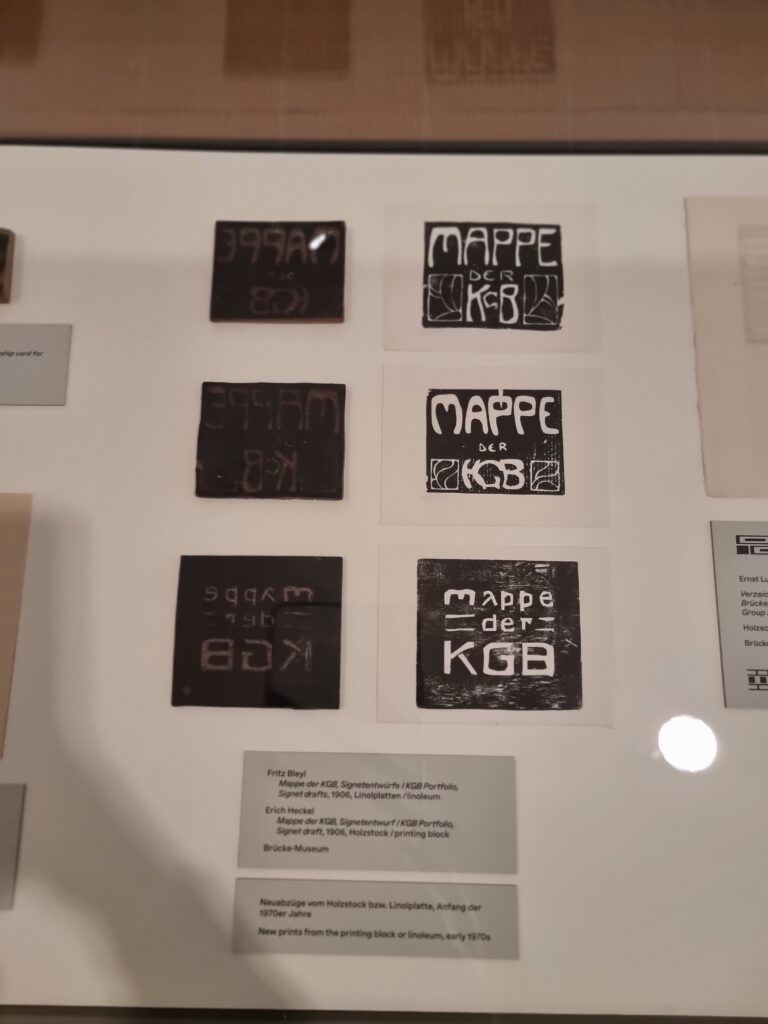
From the beginning, the Brücke actively approached other artists to join the group as well. Thus the four founding members were followed by Emil Nolde, Max Pechstein, Kees van Dongen and Otto Mueller, among others.
„Well lit“
Very unconventional and even under today’s circumstances having a very modern concept, the Brücke staged its first exhibition in 1906 in the Seifert lamp factory. The French Impressionists had already established unusual locations for their exhibitions, so that the Brücke, impressed by this, adopted this avant-garde and above all cost-friendly concept. Although the number of visitors in the lamp factory hadn’t meet the Brücke’s expectations, the exhibition was the prelude to a whole series of further exhibition participations beyond the borders of Dresden. At least in retrospect it was the first milestone.
A component of the exhibition and expressly encouraged are questions. How big is the largest picture? (In the current exhibition it is Emil Nolde’s “Hunter’s House on Alsen” with 73x88cm. – In general it is Kirchner’s “Women in the Bath” (not part of the current exhibition) with its measurements of 150,5 x 200cm) Where did Bleyl go to school? Which wood was used for the woodcuts? (mostly spruce wood)…etc. A large pinboard invites visitors to ask questions and at the same time gives detailed answers to already asked ones!
Addendum: *In 2012, Cornelius Gurlitt’s grandson was wrongly accused that his art collection had come into his father’s possession (and later passed on to him) under ethically unacceptable circumstances during the turmoil of World War II. The emergence of a painting and eventually the entire collection resembled a detective story, the tragic lead of which was Gurlitt’s grandson. In 2012, the collection was seized by the Augsburg public prosecutor’s office, Gurlitt was investigated and assigned a temporary guardian by the Munich district court “for health reasons.” In public, the image of an unlawful appropriation of “degenerate art” by his father Hildebrand Gurlitt emerged, which the over 80-year-old Gurlitt vehemently contradicted. He described the paintings as the “love of his life.” Gurlitt died in Munich on May 6, 2014, due to a serious heart condition. While still alive, Gurlitt agreed to a provenance research, within a year allegedly incriminating works were to be examined and, if necessary, returned “fairly and solution-oriented” in case of an offense. A few days later, the public prosecutor’s office lifted the seizure, as new findings had emerged and the legal situation had been reassessed.(Frankfurter Allgemeine Zeitung. April 9, 2014, retrieved May 12, 2014) In retrospect, the accusations proved untenable. The investigation was closed with Gurlitt’s death. The Kunstmuseum Bern became heir to the collection. The receipt of the more than 1500 works was commented on bigotedly by the Foundation Board and the Museum’s management as “on the one hand grateful and joyfully surprised,” but at the same time emphasized a “plethora of the most difficult questions” that this testament would burden them with, “especially of a legal and ethical nature”. Nevertheless, Gurlitt’s bequest was accepted.
Where?
Brücke-Museum
Bussardsteig 9, 14195 Berlin
When?
only until 04 June 2023
Opening hours?
Wednesday-Monday 11-17, closed Tuesdays
Every 3rd Thursday of the month 11-20 h
Admission?
6 Euro, reduced 4 Euro
Info?
Cover: Fritz Bleyl, The Pelican, 1904, color woodcut, Brückemuseum ©Bleyl, Berlin/Solingen


